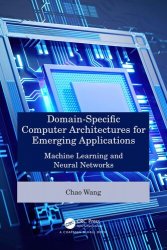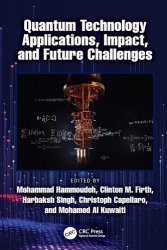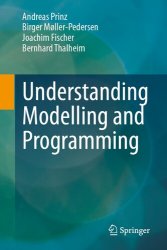 Название: Domain-Specific Computer Architectures for Emerging Applications: Machine Learning and Neural Networks
Название: Domain-Specific Computer Architectures for Emerging Applications: Machine Learning and Neural NetworksАвтор: Chao Wang
Издательство: CRC Press
Год: 2024
Страниц: 417
Язык: английский
Формат: pdf (true)
Размер: 37.9 MB
With the end of Moore’s Law, domain-specific architecture (DSA) has become a crucial mode of implementing future computing architectures. This book discusses the system-level design methodology of DSAs and their applications, providing a unified design process that guarantees functionality, performance, energy efficiency, and real-time responsiveness for the target application.
DSAs often start from domain-specific algorithms or applications, analyzing the characteristics of algorithmic applications, such as computation, memory access, and communication, and proposing the heterogeneous accelerator architecture suitable for that particular application. This book places particular focus on accelerator hardware platforms and distributed systems for various novel applications, such as machine learning, data mining, neural networks, and graph algorithms, and also covers RISC-V open-source instruction sets. It briefly describes the system design methodology based on DSAs and presents the latest research results in academia around domain-specific acceleration architectures.
In the emerging field of big data, machine learning, data mining, and artificial intelligence algorithms, as the core components of next‑generation applications, have attracted more attention from researchers. Utilizing existing hardware and software means to carry out the design of a new algorithmic architecture has become a hot research topic nowadays. Accelerating new algorithms in the era of big data is very different from the past. In the era of big data, there are many factors that make more and more users abandon the original CPU‑based single‑node processing platform and turn to other platforms and means to accelerate the execution of data mining/machine learning applications, some of which are as follows: (1) Massive dаta: The potential data scale of many application fields is extremely large, which makes it very impractical for a single machine to process data; (2) High data dimensionality: In some data mining applications, the number of features of instance data is large, and machine learning algorithms may need to segment the data features in order to process these data; (3) Complex models and algorithms: Some high‑precision machine learning algorithms usually have a more complex model representation and often require a large amount of data calculation; (4) Inference time constraints: Some data mining applications such as speech recognition and visual object detection have real‑time requirements, making single‑computer processing unable to meet the needs; and (5) Multi‑level prediction: Some machine learning algorithms can be represented in the form of multi‑level pipelines, multi‑level classifiers in the pipeline need to work in parallel, and single‑node CPU processing platforms often cannot meet this demand.
Machine Learning is concerned with using data to construct appropriate predictive models to make predictions about unknown data. According to the similarity of the presentation and implementation of Machine Learning algorithms, we can categorize the algorithms such as Bayesian‑based algorithms and neural network‑based algorithms. Of course, the scope of machine learning is so vast that some algorithms are difficult to categorize explicitly into a particular class, and for some classifications, algorithms of the same classification can target different types of problems. Some researchers classified most of the machine learning algorithms into 12 types, where each type of algorithm tends to have similar models and solutions, and it is possible to design gas pedals by extracting common features in a particular class of Machine Learning algorithms to accelerate a particular class of Machine Learning algorithms.
Providing cutting-edge discussion of Big Data and Artificial Intelligence scenarios in contemporary industry and typical DSA applications, this book appeals to industry professionals as well as academicians researching the future of computing in these areas.
Скачать Domain-Specific Computer Architectures for Emerging Applications: Machine Learning and Neural Networks
[related-news] [/related-news]
Комментарии 0
Комментариев пока нет. Стань первым!















